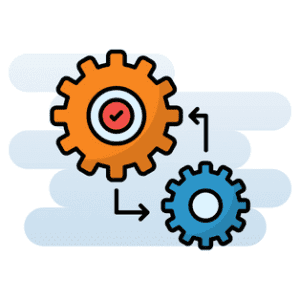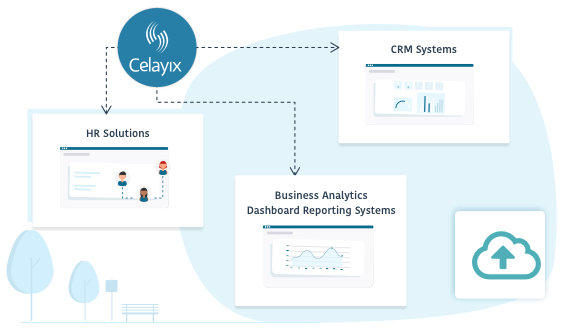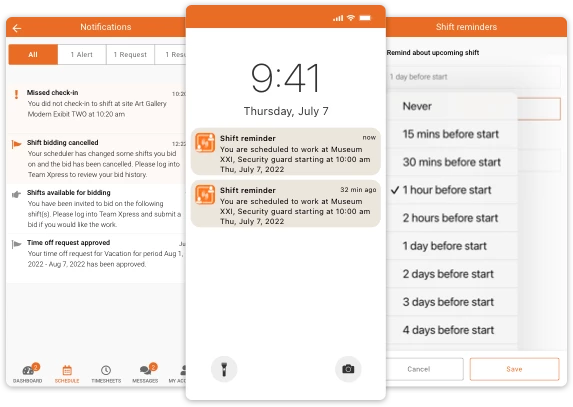Most organizations start their business management with spreadsheets. Well, why not? Spreadsheets are free, familiar, and versatile. They’re readily available on your computer and are a viable option to any infant company seeking to control costs.
With this in mind, we need to remind ourselves that spreadsheets may not be the best option for your business in the long run.
Businesses rely on spreadsheets for some of their most important tasks. From keeping accounts to maintaining customer records, spreadsheets can offer easy access and tracking of any financial records. But beyond that, they act as a liability. How so?
Well, let’s take a look at the costs associated with spreadsheets.
Costs associated with running your Business on Spreadsheets:
Most business owners know that there are many types of costs associated with business operations. There are direct/indirect costs, and also realized/unrealized costs. Typically, indirect or unrealized costs can go unnoticed as they can be harder to track and monitor effectively. So, let’s take a look at some of the direct costs:
Direct Costs
Human error in data entry:
Studies show that 90% of spreadsheets containing more than 150 rows have at least one major mistake. Human error is very likely wherever there is a large amount of data. Some businesses find it acceptable and, unfortunately, expect it. They even build out formulas and reporting with these errors in mind!
However, this error-prone data might impact payroll, billing or any other accounting operations. Moreover, errors often occur when companies use spreadsheets as part of their employee scheduing process! Bad scheduling, often because of a lack of appropriate scheduling software, creates increased labor costs due to overtime or high employee turnover. It can also lead to under/overstaffing, or double bookings.
Difficulty in management:
Workforce management is no easy task. Managing a workforce through spreadsheets can be time consuming and overwhelming. Real-time activity monitoring requires the ability for the spreadsheets to be shared internally with ease. While it is easy to do this, any time a change is made, it has to be redistributed.
Performance can only be evaluated if the data is name-stamped or time-stamped, and spreadsheets lack clarity in identifying progress because there is too much information for a manager to filter through. There are better solutions out there, trust us!
Scheduling difficulties:
How a manager creates a schedule has a significant role in how the business runs. Managers must spend time deciding how many employees work a shift, when they work a shift and how they are performing a shift. A spreadsheet does not ease this burden. The time consumed by manually scheduling employees takes away from time that could be used to grow the business.
Manual scheduling is spent focusing mainly on filling the schedule, rather than making the most of the resources available. Schedulers often use Overtime to fill gaps, even when it isn’t necessary. Sometimes schedulers can double book employees.
This results in missed shifts and no-shows as well as increased payroll costs. All of these issues contribute significantly to your business costs.
Indirect Costs
Lack of integration with other systems:
The data in your spreadsheets is crucial for creating detailed reports, which are then distributed to the respective departments to assess performance etc. However, creating these reports is a big task when there is so much information needed and available. Since spreadsheets can’t integrate with your internal systems, it makes it less desirable for data collection and analysis.
A company runs on various internal systems, such as payroll, billing and HR. Some of these systems are core to the business, and manually inputting data in this system is time-consuming and inefficient. It can also lead to further errors!
As your company seeks to expand, these clunky manual processes don’t seem ideal. Whether it’s the billing, payroll, or time collection software, automation and integration are key to ensure the timely and accurate transfer of data.
Decentralized information:
In the world of hacking and viruses, it is essential for companies to have a cloud or a backup for all their data. Spreadsheets are problematic in this sense because they are difficult to share internally and relatively easy to share externally. This implies that while anyone in the world can access spreadsheets once they physically find the document, they can be a logistical nightmare for employees who are constantly sharing and updating the spreadsheet.
Moreover, these spreadsheets can be easily overwritten, lost or not communicated to the employees. This is worrying when the information in the spreadsheet is vital for the business, and there has been some physical damage to the computer that could result in the loss of that vital information.
If your company wants to avoid these risks and mitigate these costs, then automated, cloud-based workforce management or scheduling software is the way to go. Eventually, every growing business seeks to find specific tools for specific business problems.
Whether it’s to find an accounting system, a payroll system, or a workforce management tool, the assistance a particular tool like scheduling software can provide is much better than spreadsheets. Not only would this help reduce costs and risks, but it will also lighten the workload of management and schedulers. Let’s take a deeper look at how an employee scheduling software can do much more than spreadsheets;
Centralized information and communication:
Unlike spreadsheets, employee scheduling software is centralized and easily customizable. How so? The software is a cloud-based desktop and mobile app platform that automatically saves and updates all changes. This means there is no chance of losing, or overwriting data.
Moreover, the scheduler acts as the centralized figure who is notified of any changes to the schedule. This makes scheduling easier, faster and more efficient. Furthermore, the mobile app acts as the communication platform for all employees that get notified of any changes or updates.
Seamless Integration:
The flexibility of employee scheduling software improves synergy between various processes in your organization, helping integrate your business. An integrated business would be more efficient, less costly in the long run and provide a better work environment. With the help of the scheduling software, your company can better coordinate between schedulers and employees by providing and improving data accessibility.
Improve accuracy:
Spreadsheets can cost you a lot of money due to inaccuracy and human error. Whether due to inaccurate time collection or bad scheduling, spreadsheets offer very little to help cut these costs. On the other hand, scheduling software has automated employee shift scheduling and an accurate time and attendance collection system.
Celayix automates the employee check in/out process. This reduces any potential timesheet fraud. The inbuilt time and attendance software will send your shift performance data to your preferred payroll, billing, and financial systems. No more human errors mean better accuracy!
How Celayix can Help
As luck would have it, that’s not it! There’s so much more than employee scheduling software companies like Celayix can offer that would convince your company to shift away from spreadsheets. These systems often appear as unnecessary costs to business owners, but hopefully, now you can see that they can mitigate many other costs & issues.
For instance, please look at one of our customers in Genesee District Library who found a fairer and error-free scheduling system with clear and accessible schedules for over 150 employees located in 19 different branches. Through the help of our autofill feature, GDL was able to spend much less time on scheduling and make fewer mistakes such as double-booking.
GDL’s Branch Operation Manager, Kelly Richards, voiced about spreadsheets “It was just taking up too much time. We couldn’t get our work done.”
Well, it’s not just them that have noticed the downside to running your business on spreadsheets; there are companies in the home healthcare, security, and hospitality industries too who found spreadsheets is time-consuming. Fortunately, Celayix provided them with a solution that spreadsheets are unable to offer and helped these companies implement a scheduling system that is more integrated, centralized, and efficient.
If you’d like to hear more about how our software could help you manage your workforce, reach out to our Solution Advisors today!











